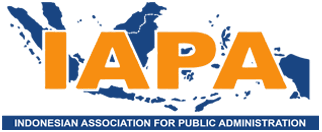Women's Participation in Village Developent Planning: Case of Indonesia
DOI:
https://doi.org/10.21776/ub.jpas.2021.006.02.3Keywords:
village law, women participation, village planning, participatory governanceAbstract
The introduction of participatory processes concerning village development planning by Law 6/2014 on Village open up the opportunity for village communities to shape village development priorities. It is expected that village community involvement over village planning will make village government more accoutable downwardly and village development be responsive to villagers problems and needs. Using literature review, the present paper inspects closely a body of literature to ensure that women and other historically marginalized groups have chance to participate meaningfully in these processes. The reviewed literature suggest a divergence between what scholars believe about advantages of participatory processes and limited impact of such. Similarly, within this nascent stage of village law implementation participatory spaces in determining village development priorities are still dominated by village elites and men, and village development is heavily focus on infrastructure development. However, the presence and empowered women's organizations or groups which exists in villages might influential to drivw village development priorities that are responsive for women. What we learned from these body of literature is that meaningful participation by women and other historically disadvantaged groups can only be achieved through continious intervention and facilitation either by dedicated and reform-minded public officials and other critical actors. Furthermore women should involve in participatory village development planning as a collective, rather than as individuals.
References
Agrawal, B. (2001). Participatory Exclusions, Community Forestry, and Gender: An Analysis for South Asia and a Conceptual Framework. World Development, 29 (10) 1623 – 1648.
Antlöv, H., Wetterberg, A., & Dharmawan, L. (2016). Village governance, community life, and the 2014 Village Law in Indonesia. Bulletin of Indonesian Economic Studies, 52(2) 161–183.
Antlöv, H. (2003). Village government and rural development In Indonesia: The new democratic framework. Bulletin of Indonesian Economic Studies, 39(2) 193–214.
Antlov, H., & Eko, S. (2012). Village and sub-district functions in decentralized Indonesia. Paper prepared for Decentralization Support Facility (DSF) closing workshop in Jakarta, 12–13 March 2012.
Asian Development Bank (ADB). (2016). Toward Mainstreaming And Sustaining Community-Driven Development In Indonesia: Understanding Local Initiatives And The Transition From The National Rural Community Empowerment Program To The Village Law. ADB.
Beard, V. A., & Cartmill, R. S. (2007). Gender, collective action and participatory development in Indonesia. International Development Planning Review (IDPR), 29(2) 185–213.
Blackburn, S. (2004). Women and the State in Modern Indonesia. Cambridge University Press.
Cleaver, F. (1999). Paradox of Participation: Questioning participatory approaches to Development, Journal of International Development, 11 (1) 597 - 612.
Coelho, V. S. P., & Favareto, A. (2011). Participatory Governance and Development: In Search of a Causal Nexus. Geography Compass, 5 (9) 641–654.
Cornwall, A. (2003). Whose Voices? Whose Choices? Reflections on Gender and Participatory Development. World Development, 31 (8) 1325–1342.
Das, P. (2014). Women’s Participation in Community-Level Water Governance in Urban India: The Gap Between Motivation and Ability. World Development 64(2) 206–218.
Fischer, F. (2012). Participatory Governance: From Theory To Practice, in Levi-Faur, David (ed). The Oxford Handbook of Governance. Oxford University Press.
Fung, A., & Wright, E.O. (2001). Deepening Democracy: Innovations in Empowered Participatory Governance. Politics & Society 29 (1) 5 – 41.
Gaventa, J., & Barrett, G. (2012). Mapping the Outcomes of Citizen Engagement. World Development 40 (12) 2399–2410.
Gibson, C., & Woolcock, M. (2008). Empowerment, Deliberative Development, and Local-Level Politics in Indonesia: Participatory Projects as a Source of Countervailing Power. St Comp Int Dev 43(2) 151 - 180.
Heller, P. (2001). Moving the State: The Politics of Democratic Decentralization in Kerala, South Africa, and Porto Alegre. Politics & Society, 29 (131) 131 – 163.
Hicks, J. (2011). Bringing women into local governance: a review of enabling mechanisms in South Africa. Community Development Journal 46 (3) 351 – 354.
Mansuri, G., & Rao, V. (2013). Localizing development: does participation work? World Bank.
Masanyiwa, Z.S., Niehof, A., & Termeer, C.J.A.M. (2014). Gender perspectives on decentralisation and service users’ participation in rural Tanzania. The Journal of Modern African Studies ,52 (1) 95 – 122.
McNulty, S. (2018) Embedded exclusions: exploring gender equality in Peru’s participatory democratic framework, Global Discourse, 8 (3) 532 -549.
McNulty, S. (2015) Barriers to Participation: Exploring Gender in Peru’s Participatory Budget Process, The Journal of Development Studies, 51 (11) 1429 - 1443.
Ministry of Home Affairs (MOHA) Regulation 114/201. (2014). General Guideline of Village Development. Jakarta: MOHA.
National Team for the Acceleration of Poverty Reduction (TNP2K). (2015). Integrating Community-Driven Development Principles Into Policy: From Pnpm Mandiri To The Village Law. Secretariat of the Vice President of the Republic of Indonesia.
Sambodho, J. P. (2019). Choosing the playing field: Non-participation in the village level participatory deliberative forums. MASYARAKAT Jurnal Sosiologi 24 (2) 143–165.
SMERU Research Institute. (2017). Study on the Implementation of Law No. 6/2014 on Villages Baseline Report. SMERU Research Institute – Local Solutions to Poverty.
SMERU Research Institute. (2019a). Tracking Village Fund Spending and Benefits: Case Study Report (in Indonesian), SMERU Research Institute – Local Solutions to Poverty.
SMERU Research Institute. (2019b). Study on the Implementation of Law No. 6/2014 on Villages: Endline Report (in Indonesian). SMERU Research Institute – Local Solutions to Poverty.
Speer, J. (2012). Participatory Governance Reform: A Good Strategy for Increasing Government Responsiveness and Improving Public Services? World Development, 40(12) 2379–2398.
Sutiyo, S., & Maharjan, K. L (2013) Community Participation in Decentralized Rural Development: A Case Study of Three Villages in Purbalingga District, Indonesia. Journal of International Development and Cooperation, 18 (3) 99 -110.
Syukri, M. (2019). Gender Equality in Indonesian New Developmental State: The Case of the New Participatory Village Governance. The SMERU Research Institute.
Usui, N., & Alisjahbana, A. S. (2005). Local development planning and budgeting in decentralized Indonesia: Missing links in the bottom-up approach. Kansai University Review of Economics 7: 71–97.
Widianingsih, I., & Morrell, E. (2007). Participatory planning in Indonesia. Policy Studies 28(1): 1–15.
Wampler, B. & McNulty, S. (2011). Does participatory governance matter? Exploring the nature and impact of participatory reforms. Washington, DC: Woodrow Wilson International Center for Scholars.
World Bank. (2018). Participation, Transparency and Accountability in Village Law Implementation (Baseline Findings from the Sentinel Villages Study October 2015–February 2016. Jakarta: The World Bank – Local Solutions to Poverty.
Downloads
Published
Issue
Section
License
Copyright (c) 2021 JPAS (Journal of Public Administration Studies)

This work is licensed under a Creative Commons Attribution 4.0 International License.
Copyright Statement
Authors who publish with JPAS agree to the following terms:
(1). Authors retain copyright and grant the journal right of first publication with the work simultaneously licensed under a Creative Commons Attribution License that allows others to share the work with an acknowledgement of the work's authorship and initial publication in this journal.
(2). Authors are able to enter into separate, additional contractual arrangements for the non-exclusive distribution of the journal's published version of the work (e.g., post it to an institutional repository or publish it in a book), with an acknowledgement of its initial publication in this journal.
(3). Authors are permitted and encouraged to post their work online (e.g., in institutional repositories or on their website) prior to and during the submission process, as it can lead to productive exchanges, as well as earlier and greater citation of published work (See The Effect of Open Access).
Permissions and reuse
For authors
Authors may use their own articles for the following non-commercial purposes without asking our permission (and subject only to acknowledging first publication in JPAS and giving a full reference or web link, as appropriate).
(1). Posting a pdf of their own article on their own personal or institutional website, for which no charge for access is made.
(2). Making a reasonable number of copies for personal or non commercial professional use.
This includes the contributors own teaching purposes.
(1). Republishing part or all of the article in a book or other publication edited by the author (except for multiple contributions in the same book or publication, for which permission needs to be sought.
(2). Using individual figures or tables or extracts of text (up to 300 words) in other publications published by a third party.
(3). Using the article in a course pack or compilation (whether paper or electronic) in the authors institution. This does not apply if a commercial charge is made for the compilation or training programme.
For third parties
All articles published by JPAS are published by default as open access.















